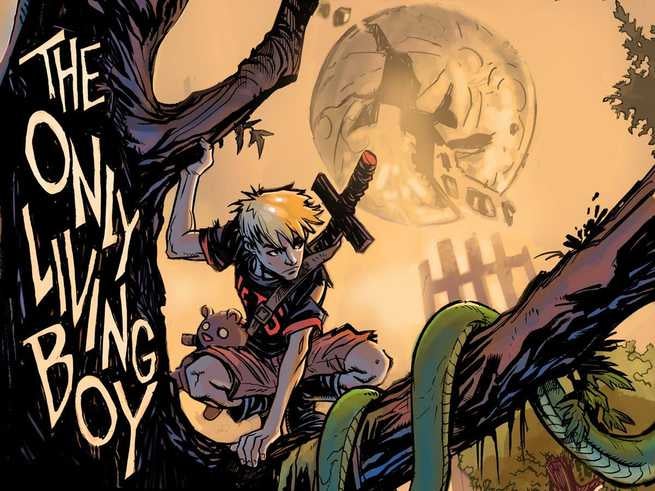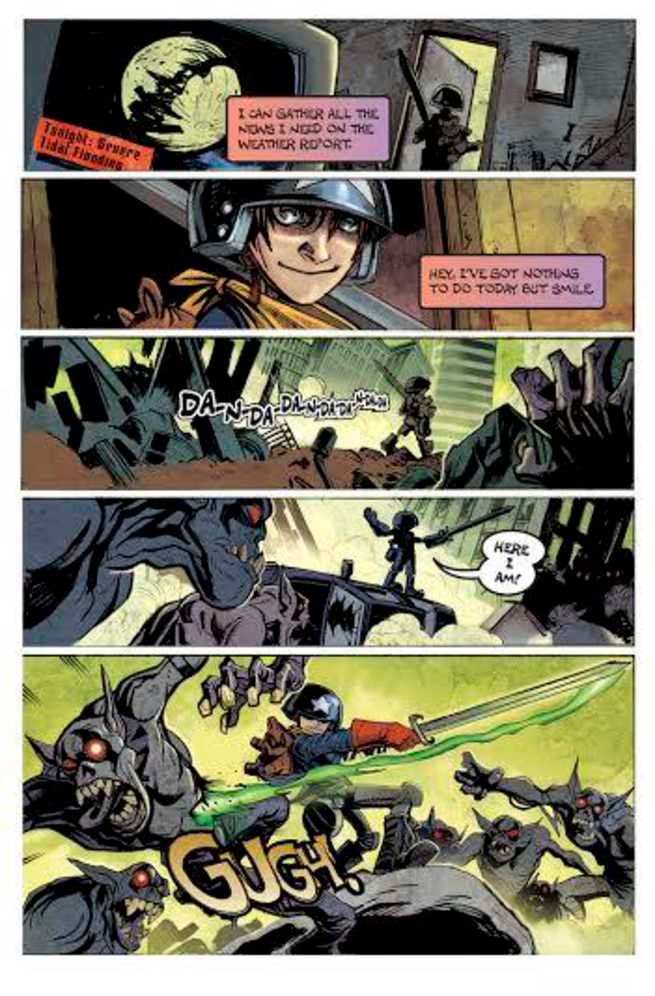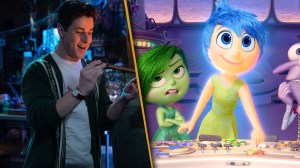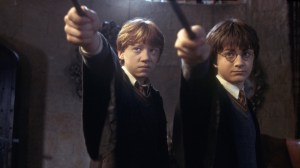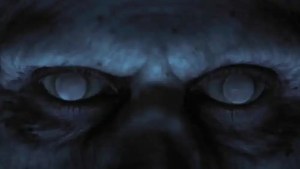David Gallaher & Steve Ellis have spent more time working in digital comics than many in the industry today. Having collaborated on a number of projects together, the two are a perfect example of creators in sync. We caught up with the duo about their most recent projects and they offer a bit of new news for their fans at the very end.
Videos by ComicBook.com
Let’s start with The Only Living Boy. The story follows a unique lineage of other classic comics about “The Last” male on the planet, like Jack Kirby’s Kamandi and Brian K. Vaughn’s Y: The Last Man. What new wrinkles does The Only Living Boy add to the familiar premise, and how does it distinguish itself from Kirby’s and Vaughn’s work?
DG: Just as Planet of the Apes and I Am Legends were pre-cursors to Kamandi and Y: The Last Man, we’re all standing on the shoulders of giants.
SE: We’re dealing with archetypes here. Something that falls between those books that is uniquely it own.
DG: Not just Kamandi or Y either … Battling Boy and Adventure Time follow in that tradition too.
We’re are building upon a foundation from a single passage that was written over a hundred and ten years ago by Thomas Bailey Aldrich. It reads as follows:
Imagine all human beings swept off the face of the earth, excepting one man. Imagine this man in some vast city, New York or London. Imagine him on the third or fourth day of his solitude sitting in a house and hearing a ring at the door-bell!
That’s it. That’s the entire story from the “Ponkapog Papers” in 1904. Frederic Brown used the passage as the inspiration for “Knock”. It got adapted into radio serials, like X Minus One and Dimension X. Written into books by Richard Matheson. Turned into Vincent Price or Charlton Heston films and more. That one story set the framework for every crazy, pseudo-apocalyptic story that followed.
Oddly enough, our series was also inspired by the Simon & Garfunkel tune “The Only Living Boy in New York” which I was listening to on the way back from my job with the NYPD. I riff the central concept by Steve, which we mocked up in 2009 for San Diego Comic Con as a little two page story. We tinkered with it quite a bit when we debuted the full series in 2012, but the song, Thomas Bailey Aldrich and Bruno Bettelheim’s “The Uses of Enchantment: The Meaning and Importance of Fairy Tales” were the biggest influences.
SE: From a visual standpoint, I came to the story designing a kid who naturally looked and behaved like a kid might. Not a teenager, not a young adult, but like a twelve year old — with a visual style that was a little more universal, like something you might find in a Saturday Morning Cartoon or an animated feature film. It’s a very specific type of style — something that’s more approachable to a wider audience.
DG: The work that Steve and I do is inspired quite a bit by music, classic literature, childhood traumas, and old media. Our story is forged from the same fires as the Flash Gordon radio serials, John Carter adventure stories, The Jungle Book, Rip Van Winkle Wizard of Oz, and Peter Pan. We looked far beyond comics to built our what we were doing.
SE: To me it’s much more like The Lord of the Rings or the Lloyd Alexander books. Growing up, I always gravitated to stories about kids trying to figure things out for themselves. That’s what we’re working on here. Erik comes to our story without any answers — and we get to watch as he figures himself out. Those are the best kinds of stories.
You’ve had experience creating both digital-exclusive comics and traditional printed comics. What are the difference between crafting a comic book for the digital landscape and the print one? Do you find yourselves using different storytelling techniques, and if so, what are those techniques? And when bringing The Only Living Boy onto the printed page, did you have to make any changes to the story? If so, what were those changes?
SE: With BOX 13 and HIGH MOON, the initial concepts and formats were digital. The Only Living Boy is print-native. When we envisioned this project, it was envisioned book, not as a web project. With every project we do, we consider the format, timing, design, and the landscape. Box 13, for example, was designed with both print and mobile in mind; it moves at a very specific pace. Only Living Boy though was designed to me more evocative of a storybook, with landscapes that stretch on forever, and layouts that were both expansive and impressive. We wanted readers to get lost in the pages. We’ve tried to make every panel and every moment seem important.
DG: Moving the project to different platforms, like Tumblr and Tapastic, where the delivery is non-traditional has been an interesting experiment — one that has proven to be largely successful for us, but also a learning experience.
Your studio — Bottled Lightning — has been a two-person team for years now. How has your creative relationship developed and evolved over the years, and how has your consistent collaboration enriched the comics-making experience?
DG: Steve and I used to live a few blocks from each other. That was a real treat. When we were working on High Moon on a weekly basis, we were able to build a story collaboratively, face-to-face. I think things really grew from there. It’s very unusual to see teams work together on independent projects as often as we do. And — now we’re looking at ways to grow beyond that — with things like a fanclub though Patreon — or starting a podcast on creativity — those sorts of things.
SE: What’s interesting is that the more we work together — the stronger we’re able to understand how each other works. We’re able to test each other and challenge each other — which lets our best work shine through. We’ve been able to develop our own language and our tools that enable us to build each and every story from the ground up. That’s far more difficult to do when you’re working with someone you’ve never met before. We’re working towards a singular vision — one that is built on respecting how each other works best.
What do you enjoy the most about creating The Only Living Boy, and why? Is it the characters, the world, the digital platform, etc? What makes this a project you keep coming back to?
DG: For me, it’s certainly the characters and the story. But — certainly the idea of making the series available as a webcomic, through NoiseTrade, Tapastic, Tumblr, Comixology, and now through Patreon doesn’t hurt. Our goal is to remove the barriers for entering our world, meeting our characters, and enjoying the adventure.
SE: I feel inspired by this book. Like we’re creating tomorrow’s readers today. Teaching readers the language of comics at an earlier age — I love being a part of that —all while exploring different formats, different distribution, and different ways to communicate.
DC just revealed that you would be the creative team for their Convergence: Green Lantern Corps. miniseries. What’s it like jumping from your own sandbox–where you control everything about your world and characters–to another company’s? What are differences between working in a smaller, self-contained universe and massive one filled with pop culture’s biggest characters?
DG: We’ve played in the Marvel and DC Comics sandboxes before, both separately and together. But it’s a great deal of fun writing The Green Lantern Corps. There’s so much amazing stuff I learned writing the book … and it’s been an amazingly positive experience.
SE: When I first started working in comics, I was pretty much an underling, learning the ropes. I left to work in fantasy illustration and gaming, but when I returned to comics — I came back better, stronger, faster, with more confidence to take on bigger projects — like Breaking Bad, Walking Dead, Better Call Saul, and Captain America. It’s my own heroic journey in a way. It’s a great feeling to be welcomed back — and to be trusted with these characters.
DG: It’s certainly different, but the fundamentals of our collaborations certainly shine through.
If there’s anything else that you’d like to add about the great work your studio is doing, feel free to do so here.
DG: We’re thrilled to announce the release of our Bottled Lightning Fan Club program which is starting TODAY! We’re using Patreon to engage with our fans — and give them a super behind the scenes access to how and why we do what we do. Want to see first hand how a comic is made? Or get portfolio or script insights? This is the perfect place for it.


